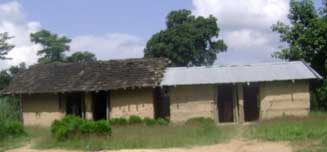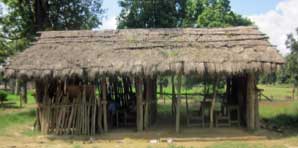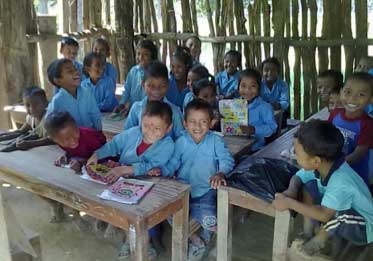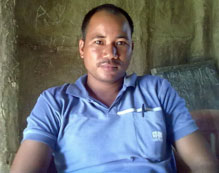The New School in Surmi was completed on January 19, 2012!

The New School

The New School
Surmi Community Profile
Surmi is part of the Gadariya VDC (Village Development Committee) in the Kailali District of far western Nepal. This community was founded in 1862 by Mr. Desh Raj Mahato. Today there are 1,145 people living in Surmi. All of them follow some form of the Hindu religion, and 99% belong to the Tharu ethnic group. The Tharu make up about 6.5% of Nepal’s total population, and until the practice was banned in 2000 many Tharu were forced into a form of indentured servitude called Kamaiya. Surmi is 60 km from the buildOn office in Dhangadhi. The leaders of the community are Mr. Raju Chaudhary and Mr. Basant Chaudhary. There is a government sub health post in Gadariya, 4 km from the village.
The people of Surmi are subsistence farmers. Families grow rice, wheat, oilseed, and vegetables. The climate is warm for most of the year, with cooler temperatures from November to January and the heaviest rains from June to August.
The people of Surmi are subsistence farmers. Families grow rice, wheat, oilseed, and vegetables. The climate is warm for most of the year, with cooler temperatures from November to January and the heaviest rains from June to August.
The Surmi School Need

A New Classroom
There are currently 94 students enrolled in Adarsha Primary School- 45 girls and 49 boys. They study with 4 teachers from the community in grades 1-4. This school was formally established just 3 years ago.
There were no permanent classrooms in Surmi prior to this project, so the students studied in mud and wood structures with tin or thatch roofs. These temporary structures are easily damaged during the annual monsoon season.
Surmi was chosen as a buildOn project site after community members contacted our Nepal staff for help. They learned about buildOn from a nearby community where buildOn completed a school in 2011.
There were no permanent classrooms in Surmi prior to this project, so the students studied in mud and wood structures with tin or thatch roofs. These temporary structures are easily damaged during the annual monsoon season.
Surmi was chosen as a buildOn project site after community members contacted our Nepal staff for help. They learned about buildOn from a nearby community where buildOn completed a school in 2011.

Former Classrooms

Former Classroom

Another Former Classroom
The Surmi School Project
The Surmi school project broke ground on October 2nd 2012 and was completed on January 19th 2012. The school in Surmi has 3 classrooms as well as 2 latrines. It has also been furnished with desks and seats and permanent chalkboards. Students began using the new school on February 15th, 2013: The people of Surmi contributed a total of 1,945 volunteer workdays to the project, which finished 8 days behind schedule due to delays caused by heavy rains. Before beginning construction they also collected local materials for the project and met with buildOn staff to sign a covenant outlining the following responsibilities:
Community Contribution
• Unskilled labor: 20 workers (10 women and 10 men) per day, six days per week
• Commitment to educating girls and boys equally
• The land on which the school will be built
• High quality local materials: sand, gravel, water & rocks
• Volunteer management committee made up of 12 villagers (six women, six men)
• Lodging for buildOn Field Coordinator and skilled laborers in local homes
• Basic construction tools (picks, buckets, etc.) when available
Opportunity For All & buildOn Contribution
• Engineering and architecture
• Construction materials (excluding local materials) for school and latrine
• Skilled labor and plans needed to build the school
• Project management (buildOn coordinators)
• Instruction in basic construction techniques
• School furniture
Community Contribution
• Unskilled labor: 20 workers (10 women and 10 men) per day, six days per week
• Commitment to educating girls and boys equally
• The land on which the school will be built
• High quality local materials: sand, gravel, water & rocks
• Volunteer management committee made up of 12 villagers (six women, six men)
• Lodging for buildOn Field Coordinator and skilled laborers in local homes
• Basic construction tools (picks, buckets, etc.) when available
Opportunity For All & buildOn Contribution
• Engineering and architecture
• Construction materials (excluding local materials) for school and latrine
• Skilled labor and plans needed to build the school
• Project management (buildOn coordinators)
• Instruction in basic construction techniques
• School furniture
Without education nobody can improve his life properly. Education only can open the door of development. So we need education for our community development.
- Mr. Raju Chaudhary, community leader, age 34

Raju Chaudhary
